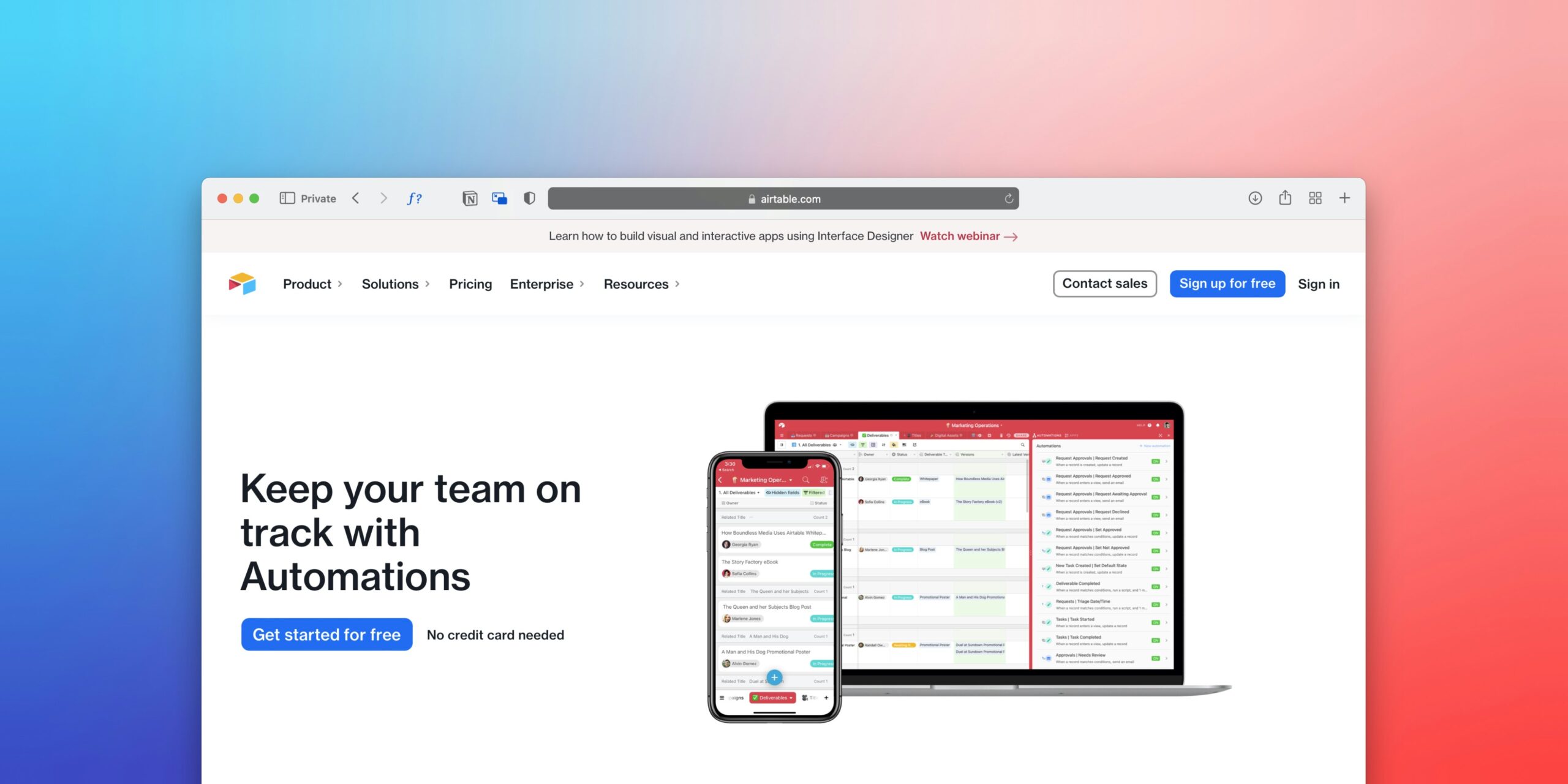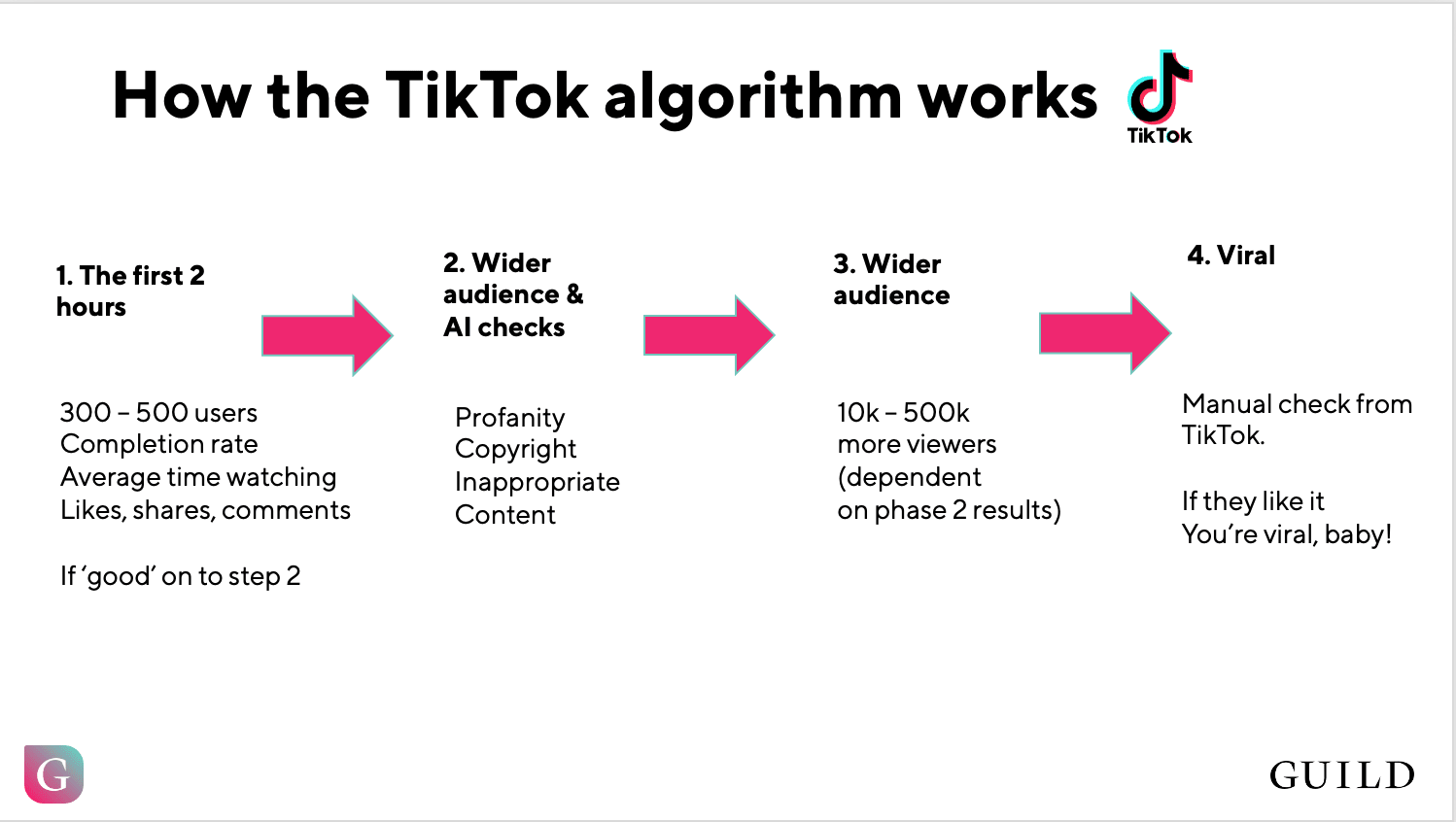Unveiling The Mystery: Social Media Algorithm Insights Revealed offers a fascinating exploration into the inner workings of social media algorithms. Have you ever wondered why certain posts gain more traction than others? This article dives deep into the mechanics behind social media algorithms and uncovers the key factors that determine the reach and visibility of content. Whether a casual user or a social media enthusiast, prepare to unlock the secrets governing your online experience. Let’s embark on an intriguing journey to unravel the mystery behind social media algorithms.
Evolution of Social Media Algorithms
Introduction to Social Media Algorithms
Social media algorithms play a crucial role in shaping and organizing the content we see on platforms like Facebook, Instagram, Twitter, and YouTube. These complex algorithms are designed to determine which posts, videos, and advertisements are most relevant and engaging for each user. Understanding how these algorithms work and the factors that influence their decisions is essential for both users and content creators to navigate and succeed in the ever-changing landscape of social media.
Historical development of social media algorithms
The development of social media algorithms can be traced back to the early days of these platforms. Social media feeds were displayed chronologically in the early years, with the most recent posts appearing at the top. However, as the content volume grew exponentially, it became impossible for users to keep up with the sheer amount of posts from their friends, family, and favorite brands. To address this issue, algorithms were introduced to prioritize content based on relevance and engagement.
Changes in algorithms over time
Over time, social media algorithms have undergone significant changes in response to user behavior, feedback, and technological advancements. One of the most notable changes was the shift from purely chronological feeds to algorithmically curated ones. This change sparked a debate about the impact on user experience and the ability of content creators to reach their audience. As platforms evolve, algorithms have become increasingly sophisticated, leveraging artificial intelligence and machine learning to personalize content and improve user engagement.
Understanding Social Media Algorithms
Importance of social media algorithms
Social media algorithms are vital for creating a personalized experience for each user. By analyzing vast data, algorithms can determine what content a user is likely to find relevant and engaging. This helps filter out noise and deliver the most exciting and valuable content to users’ feeds. Without algorithms, users would be overwhelmed by the sheer volume of content and miss out on the posts that matter most to them.
How algorithms work
Social media algorithms analyze various factors to determine what content to show on users’ feeds. These factors include user preferences, past interactions, content popularity, and recency. Algorithms use this data to predict what a user will likely engage with and tailor the content accordingly. As users scroll through their feeds, algorithms continuously learn and adjust to their preferences, providing a more personalized experience.
Factors Influencing Algorithmic Decisions
Several key factors influence the decisions made by social media algorithms. Relevance and engagement play a significant role, as algorithms prioritize content likely to interest a specific user based on their past interactions. Popularity and virality also factor into algorithmic decisions, as content that is widely shared and receives high engagement is more likely to be shown to a broader audience. User behavior and interactions such as likes, comments, and shares provide signals to algorithms about the quality and value of content. Additionally, timeliness and freshness are essential factors, as algorithms favor recent and up-to-date posts to inform users about current events.

Key Components of Social Media Algorithms
Relevance and engagement
One of the critical components of social media algorithms is the relevance and engagement factor. Algorithms aim to display content that is most likely relevant and interesting to individual users based on their preferences and past interactions. By prioritizing relevant content, algorithms enhance the user experience by reducing clutter and presenting highly personalized feeds. Furthermore, algorithms consider the level of engagement a post has received, such as likes, comments, and shares, as an indication of its value and impact on users.
Popularity and virality
Popularity and virality are also crucial components of social media algorithms. When a post receives a high level of engagement, it signals to the algorithm that the content is resonating with users and should be shown to a larger audience. The algorithms consider the number of likes, comments, shares, and views to determine the popularity of a post. By prioritizing viral content, algorithms ensure that users are exposed to posts that are generating buzz and capturing the attention of others within their network.
User behavior and interactions
User behavior and interactions provide valuable insights for social media algorithms. By analyzing how users interact with posts, algorithms can learn about their preferences and interests. For example, if a user likes and shares fitness-related posts frequently, algorithms may prioritize fitness-related content in their feed. Similarly, algorithms consider the relationships between users, giving more prominence to content from friends, family, and close connections. User behavior and interactions are essential signals for algorithms to deliver a more personalized and engaging social media experience.
Timeliness and freshness
Timeliness and freshness are critical factors that social media algorithms consider when determining the order of content in a user’s feed. In the fast-paced world of social media, algorithms prioritize recent posts to provide users with the most up-to-date information. This ensures that users are informed about current events and trends. By displaying fresh content, algorithms keep users engaged and prevent them from missing out on timely updates and conversations within their network.
Different Algorithms for Different Platforms
Algorithmic variations across social media platforms
While the core principles of algorithms remain consistent, there are notable variations in how they operate across different social media platforms. Each platform has its unique algorithmic approach tailored to the specific characteristics and needs of its user base. Understanding these variations is crucial for content creators, as it allows them to tailor their strategies to the platform’s algorithmic preferences and maximize their visibility and reach.
Algorithmic differences between Facebook, Instagram, Twitter, etc.
Facebook, Instagram, Twitter, and other social media platforms have distinct algorithmic differences influencing the content users see on their feeds. Facebook, for example, emphasizes content from friends and family while considering engagement and relevance. On the other hand, Instagram prioritizes visually appealing content and strongly emphasizes user engagement. Twitter’s algorithmic timeline focuses on displaying posts from accounts that a user frequently interacts with or topics they have shown an interest in. Understanding these differences helps content creators optimize their strategies for each platform and effectively engage with their target audience.
Platform-specific considerations for content creators
Content creators must take into account several platform-specific considerations when developing their strategies. For example, using visually appealing images and videos on Instagram is crucial due to its highly visual nature. Hashtags significantly improve reach and discoverability on platforms like Twitter, while Facebook emphasizes content that sparks meaningful interactions among friends and family. By understanding these platform-specific nuances, content creators can tailor their content to align with the preferences of the algorithms and increase their chances of visibility and engagement.

Implications for Social Media Marketers
Understanding algorithm updates
For social media marketers, staying up-to-date with algorithm updates is crucial. Platforms often adjust their algorithms to improve the user experience or address concerns. Marketers must know these updates and understand how they might impact their content strategy. By keeping a pulse on algorithm changes, marketers can adapt their strategies accordingly and ensure their content remains optimized for maximum visibility and reach.
Optimizing content for improved visibility
To succeed in social media, marketers must optimize their content to align with the preferences of social media algorithms. This may include creating visually appealing posts, using relevant keywords and hashtags, and encouraging engagement through call-to-actions. Marketers should focus on producing high-quality content that resonates with their target audience and sparks meaningful interactions. Marketers can increase their visibility and reach a broader audience by ensuring their content meets algorithmic criteria.
Importance of engagement and interactions
Engagement and interactions are paramount to social media algorithms. The more engagement a post receives, the higher it will likely rank in users’ feeds. Social media marketers should encourage their audience to like, comment, share, and interact with their posts. This helps boost the visibility of their content and signals to the algorithms that the content is valuable and engaging. Building an engaged community is vital for long-term success on social media platforms.
Influencer marketing and algorithms
Influencer marketing has become an increasingly popular strategy for brands to reach their target audience. Social media algorithms play a crucial role in influencer marketing by determining the visibility of sponsored posts. By partnering with influencers with a strong following and high engagement rates, brands can increase the reach and impact of their campaigns. Influencers who consistently produce high-quality content and have an engaged audience are more likely to have their posts prioritized by algorithms and reach a larger audience.
Paid advertising and algorithms
Paid advertising on social media platforms is another effective way to reach a targeted audience. Algorithms play a role in determining the visibility and success of paid advertisements, considering factors such as relevance, targeting, and user behavior. Marketers should leverage the targeting capabilities provided by social media platforms to ensure their ads are displayed to the most relevant audience. By aligning paid advertising strategies with algorithmic preferences, marketers can maximize the effectiveness of their campaigns and achieve their desired outcomes.
Effects of Algorithms on User Experience
Customization and personalization
Social media algorithms provide users with a highly customized and personalized experience. By analyzing user data and behavior, algorithms can tailor content to match individual preferences, interests, and past interactions. This customization enhances the user experience by delivering the most relevant and engaging content to each user’s feed. Users are more likely to spend time on platforms that provide content that aligns with their interests and keeps them engaged, leading to a more satisfying overall experience.
Filter bubbles and echo chambers
While algorithms strive to deliver personalized content, they have also presented challenges like filter bubbles and echo chambers. Filter bubbles occur when algorithms prioritize content aligning with a user’s beliefs and interests. This can lead to limited exposure to diverse perspectives and information, potentially reinforcing existing biases. Echo chambers amplify this effect by creating an environment where users primarily interact with like-minded individuals. Users need to be aware of these effects and actively seek out diverse viewpoints to ensure a well-rounded and balanced consumption of content.
Balancing algorithmic curation and user control
The balance between algorithmic curation and user control is a delicate one. While algorithms play a vital role in curating content and delivering a personalized experience, users also value the freedom to control their feeds. Social media platforms should allow users to customize their preferences and have more control over the content they see. Striking the right balance between algorithmic curation and user control is essential to ensure a positive user experience and cater to diverse needs and preferences.
Impact on mental health and well-being
The impact of social media algorithms on mental health and well-being is a topic of increasing concern. Algorithms are designed to keep users engaged and scrolling, often presenting content more likely to elicit strong emotional responses. This can contribute to feelings of comparison, low self-esteem, and FOMO (fear of missing out) among users. Additionally, filtering content to match individual preferences can inadvertently reinforce echo chambers and limit exposure to differing opinions. Social media platforms and users must be mindful of these potential negative impacts and take steps to mitigate them.
Mitigating negative effects
To mitigate the negative effects of social media algorithms, both platforms and users can take certain steps. Platforms can prioritize user well-being by providing tools for managing screen time, offering content diversity options, and promoting digital literacy. Users can actively diversify their feeds by following accounts presenting different perspectives, engaging in meaningful discussions, and taking breaks when social media overwhelms them. Additionally, promoting awareness of algorithmic bias and the potential for filter bubbles can lead to more informed and conscious use of social media platforms.

Ethical Considerations of Social Media Algorithms
Algorithmic bias and discrimination
One ethical consideration surrounding social media algorithms is the potential for bias and discrimination. Algorithms are designed based on vast amounts of data, which can contain inherent biases or reflect the biases of the humans contributing to the data. If algorithms are not carefully designed and tested, they can perpetuate and amplify societal biases and discrimination. Social media platforms must prioritize fairness and inclusivity in algorithmic decision-making to avoid reinforcing discriminatory practices.
Privacy and data concerns
Social media algorithms collect and analyze vast user data to make informed decisions. This raises concerns about user privacy and the security of personal information. Platforms must prioritize data protection and transparency in data collection practices. Users should be given control over their data and should have access to clear explanations of how their data is being used. Striking a balance between utilizing user data for algorithmic improvements and respecting privacy is crucial to maintaining trust and ethical standards.
Algorithmic transparency and accountability
Transparency and accountability are paramount when it comes to social media algorithms. Users and content creators should clearly understand how algorithms prioritize and curate content. Platforms should provide accessible explanations of algorithmic processes and be accountable for the impact of their algorithms on users, society, and democratic processes. Open dialogue and collaboration between platforms, users, and experts can help establish standards for algorithmic transparency and increase trust in social media algorithms.
Regulatory and policy implications
The ethical considerations surrounding social media algorithms have prompted discussions around regulatory and policy measures to ensure fairness, privacy, and transparency. Governments and regulatory bodies are increasingly scrutinizing the practices of social media platforms and considering appropriate regulations. Policies that encourage algorithmic transparency, data protection, and fairness can help mitigate potential risks and ensure that social media algorithms serve the best interests of users and society.
Future Trends and Innovations in Social Media Algorithms
Artificial intelligence and machine learning advancements
Artificial intelligence (AI) and machine learning advancements are expected to shape the future of social media algorithms. These technologies can potentially personalize content further, improve algorithmic decision-making, and enhance user experiences. AI-powered algorithms can analyze complex data sets, adapt to changing user preferences in real-time, and provide more relevant and engaging content. Integrating AI and machine learning can lead to more effective algorithms that continuously learn and evolve to meet users’ needs.
Algorithmic fairness and inclusivity
The future of social media algorithms lies in prioritizing algorithmic fairness and inclusivity. There is a growing awareness of the potential biases embedded within algorithms and the need for more equitable decision-making processes. Moving forward, algorithms must be designed with inclusivity, ensuring all users have equal opportunities to be heard and represented and discover content that aligns with their interests. Algorithmic fairness will become central in developing social media algorithms to foster a more diverse and inclusive online environment.
Emerging algorithmic approaches
Emerging algorithmic approaches are constantly being explored to enhance the user experience and address the challenges of social media. For example, some platforms are experimenting with alternative feeds that allow users to switch between algorithmic curation and a purely chronological view. Others are exploring hybrid approaches that combine human curation and algorithmic recommendations. These emerging approaches offer users more control and customization options while maintaining the benefits of algorithmic personalization.
Anticipated challenges and opportunities
As social media algorithms evolve, new challenges and opportunities will arise. One of the key challenges is ensuring algorithmic transparency and avoiding the risk of filter bubbles. Balancing customization and control may also prove challenging as users demand more autonomy over their feeds. Opportunities exist for algorithms to embrace diverse viewpoints, facilitate meaningful interactions, and empower users to discover new content and perspectives. In the future, we will likely see a push for more user-centric algorithms that prioritize user control and preference.
Navigating the Social Media Algorithm Landscape
Tips for understanding algorithms as a user
As a user, understanding social media algorithms can help you navigate the online landscape more effectively. Engaging with content that aligns with your interests and actively seeking diverse perspectives is essential. Experiment with customizing your preferences and exploring different features offered by the platforms. Regularly review and adjust your privacy settings to ensure you have control over your data. Finally, watch for algorithm updates and changes to stay informed and maximize your social media experience.
Strategies for content creators to succeed
Content creators play a pivotal role in gaining visibility and engagement on social media platforms. To succeed, it is important to consistently produce high-quality and engaging content that resonates with your target audience. Understanding the preferences and nuances of the platform’s algorithm is crucial for tailoring your content strategy. Utilize relevant keywords and hashtags, encourage interactions, and collaborate with influencers to enhance your reach. Utilize analytics tools to gain insights into your audience and adapt your content strategy accordingly.
Tools and resources for analyzing algorithms
Several tools and resources are available to help analyze social media algorithms and gain insights into their operation. Social media analytics platforms provide valuable metrics and data on engagement, reach, and audience demographics. These tools can help content creators understand their performance and make data-driven decisions for optimization. Additionally, online communities and forums dedicated to social media marketing often share insights, trends, and strategies for navigating algorithmic challenges.
Keeping up with algorithmic updates
Social media algorithms are constantly evolving, and it is vital for users and content creators to stay informed about algorithmic updates. Follow official announcements and updates from the platform’s blog or social media channels. Engage in industry conversations and communities where algorithmic changes are discussed. By staying on top of updates, users and content creators can adapt their strategies and maximize the opportunities presented by algorithmic shifts.
Conclusion
The evolution of social media algorithms has transformed how we consume and interact with content online. From the introduction of chronological feeds to the era of personalized algorithms, social media platforms have continuously refined their algorithms to create an engaging and relevant user experience. Understanding how these algorithms work, the factors that influence their decisions, and their implications on user experience and content creators is crucial in navigating and succeeding in the dynamic world of social media. As algorithms advance and platforms adapt to user needs, continuous adaptation, and learning will be essential for users and content creators to thrive in the social media algorithm landscape.










![6 Steps to Create an Outstanding Marketing Plan [Free Templates] 6-steps-to-create-an-outstanding-marketing-plan-[free-templates]](https://socialmediamarketingtechniques.com/wp-content/uploads/2024/07/512-6-steps-to-create-an-outstanding-marketing-plan-free-templates-100x75.webp)

